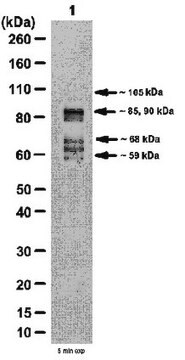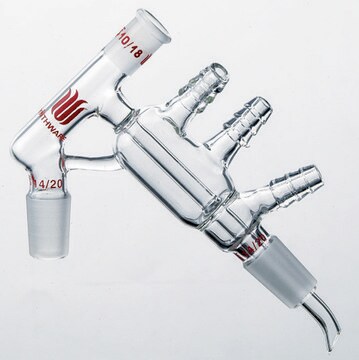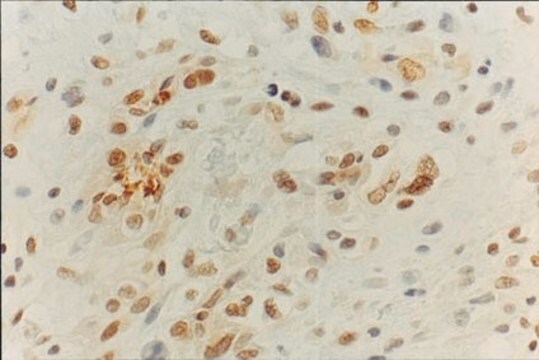CWA-1001
Anti-Human CD15 (28) ColorWheel® Dye-Ready mAb
for use with ColorWheel® Dyes (Required, sold separately)
About This Item
Prodotti consigliati
Origine biologica
mouse
Livello qualitativo
Forma dell’anticorpo
purified antibody
Tipo di anticorpo
primary antibodies
Clone
28, monoclonal
Nome Commerciale
ColorWheel®
Forma fisica
lyophilized
PM
calculated mol wt 59.08 kDa
Reattività contro le specie
human
Confezionamento
antibody small pack of 25 μL
Caratteristiche più verdi
Waste Prevention
Designing Safer Chemicals
Design for Energy Efficiency
Learn more about the Principles of Green Chemistry.
sustainability
Greener Alternative Product
tecniche
flow cytometry: suitable
Isotipo
IgMκ
Sequenza dell’epitopo
Unknown
N° accesso ID proteina
N° accesso UniProt
Compatibilità
for use with ColorWheel® Dyes (Required, sold separately)
Categoria alternativa più verde
, Aligned
Condizioni di spedizione
ambient
Temperatura di conservazione
2-8°C
modifica post-traduzionali bersaglio
unmodified
Informazioni sul gene
human ... FUT4(2526)
Descrizione generale
Specificità
Immunogeno
Applicazioni
Evaluated by Flow Cytometry in human blood granulocytes .
Flow Cytometry Analysis: Staining of one million Whole human blood granulocytes was performed using 5 μl of a 1:1 mixture of Cat. No. CWA-1001, Anti-CD15 Antibody (28) ColorWheel® Mouse mAb and CW-PE ColorWheel® activated Phycoerythrin (PE) Dye or an equivalent amount of Mouse IgM isotype control.
Note: Actual optimal working dilutions must be determined by end user as specimens, and experimental conditions may vary with the end user
Compatibilità
Descrizione del bersaglio
Stato fisico
Ricostituzione
Stoccaggio e stabilità
Note legali
Esclusione di responsabilità
Non trovi il prodotto giusto?
Prova il nostro Motore di ricerca dei prodotti.
Prodotti correlati
Codice della classe di stoccaggio
11 - Combustible Solids
Classe di pericolosità dell'acqua (WGK)
WGK 2
Punto d’infiammabilità (°F)
Not applicable
Punto d’infiammabilità (°C)
Not applicable
Certificati d'analisi (COA)
Cerca il Certificati d'analisi (COA) digitando il numero di lotto/batch corrispondente. I numeri di lotto o di batch sono stampati sull'etichetta dei prodotti dopo la parola ‘Lotto’ o ‘Batch’.
Possiedi già questo prodotto?
I documenti relativi ai prodotti acquistati recentemente sono disponibili nell’Archivio dei documenti.
Il team dei nostri ricercatori vanta grande esperienza in tutte le aree della ricerca quali Life Science, scienza dei materiali, sintesi chimica, cromatografia, discipline analitiche, ecc..
Contatta l'Assistenza Tecnica.




